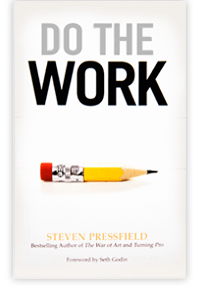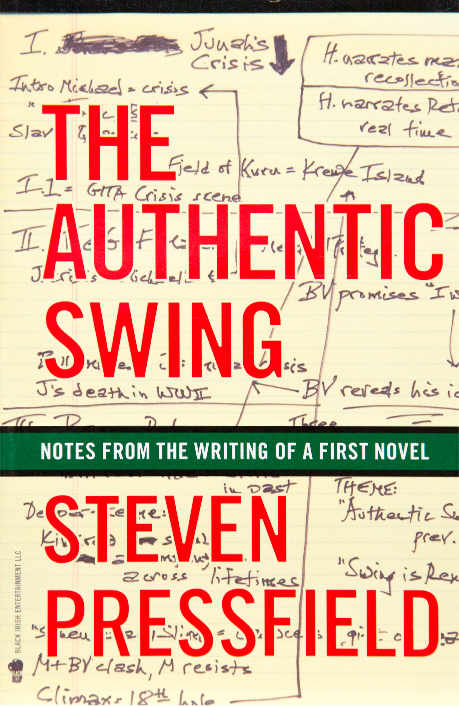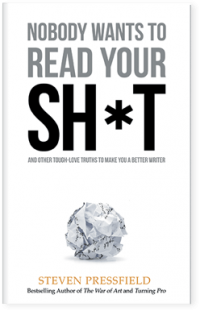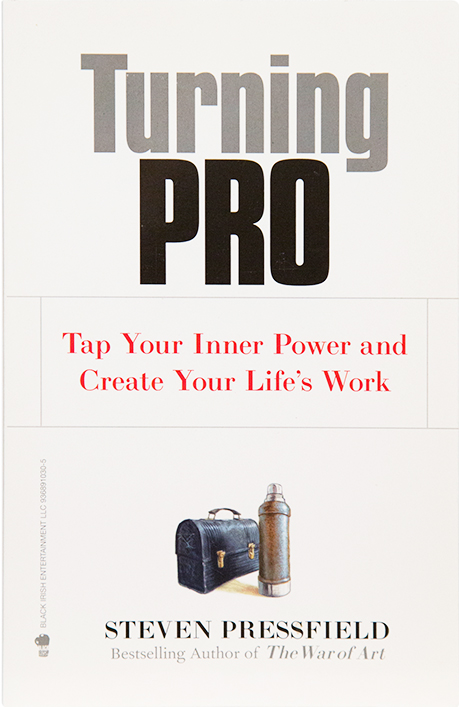The Second Act Belongs to the Villain

I learned this from Randall Wallace (Braveheart), who learned it from Steve Cannell, the maestro of a million plotlines from The Rockford Files to Baretta to 21 Jump Street:

Keep this dude up front.
Keep the antagonist front-and-center in the middle of your story.
Why does this work? Because it energizes the narrative. Think about these all-time mega-hits—Jaws, Alien, the first Terminator. The villains were everywhere in those movies and, more importantly, the protagonists were aware of and terrified of them at every moment. Still don’t believe me? Four words: Star Wars, Darth Vader.
I was watching a movie called A Single Shot on TV the other night. Sam Rockwell was the star. I’m a huge Sam Rockwell fan so I vowed to stick with it all the way.
It wasn’t easy.
Why? Because the villains disappeared in Act Two.
A Single Shot is about a hunter (Sam R.) who discovers a stash of money in the woods. The Bad Guys are the dudes who lost the cash and now want it back. They should be coming after Sam big-time. But they don’t. Or they don’t come scarily enough or often enough. The result is the air goes out of the movie.
Compare this to No Country For Old Men, a book and film with a very similar premise. But in No Country, the villain Anton Chigurh (Javier Bardem) turns up everywhere, making corpses out of half the population of Texas as he pursues the hunter Llewellyn Moss (Josh Brolin) who has his money. The result: the movie (at least the middle part) nails you to your seat.
This principle—The Second Act Belongs to the Villain—works for abstract villains as well, like the looming market crash in Margin Call. The filmmakers go back to this monster again and again and every time the story gets tauter and the audience gets sucked in deeper.
Or if you believe that the real villain of Margin Call is the impending moral catastrophe embodied in the decision by the company executives to blow up the world economy in order to save themselves and their company (yes, I believe that too), then the filmmakers have answered that as well. Every scene in the second act vibrates with this looming decision and the moral calamity it implies.
The villain in Silver Linings Playbook is not a person or an abstraction. It’s Bradley Cooper’s obsession with getting back together with his wife Nikki.
In other words, it’s an interior antagonist.
David O. Russell, the film’s writer and director, keeps this villain up front throughout Act Two, and it works like gangbusters.
Let’s take a minute and examine how he does it.
Silver Linings Playbook is a love story between Pat Solitano, Jr. (Bradley Cooper) and Tiffany Maxwell (Jennifer Lawrence.) From the moment these two meet onscreen, we know they are meant for each other. We are rooting for them to get together.
In a love story, the villain is whatever person or force is keeping the lovers apart.
In Silver Linings Playbook, that force is Bradley’s obsession with re-uniting with his wife Nikki.
Will Bradley/Pat blow this potentially great thing with Jennifer/Tiffany because he’s so compelled to get back together with his estranged spouse?
TIFFANY
Tell me about this Nikki thing. This “Nikki Love.” I wanna understand it.
PAT
We have a very unconventional chemistry, it makes some people feel uncomfortable, but not me, all right? Nikki’s the most beautiful woman I’ve ever been with. It’s electric between us! Okay, yeah, we wanna change each other, but that’s normal, couples wanna do that. I want her to stop dressing like she dresses, I want her to stop acting so superior to me, okay? And she wanted me to lose weight and stop my mood swings, which both I’ve done. I mean, people fight. Couples fight. We would fight, we wouldn’t talk for a couple weeks. That’s normal. She always wanted the best for me.
That’s the villain.
And it’s just as terrifying (to Tiffany) as the shark popping out of the water in Jaws or Arnold Schwarzenegger as the Terminator declaring, “I’ll be back.”
David O. Russell keeps this monster front and center throughout Act Two and, more importantly, he shows us that Tiffany (who’s our hero even if she’s not technically the protagonist) is excruciatingly aware of it and is terrified by it.
When Pat reads a letter that he believes was written to him by Nikki, the camera holds not on his face but on Tiffany’s. We see in her eyes how much she loves Pat and how scared she is of this Monster that lives inside Pat’s head.
Bottom line: it works.
Keep the villain up front in Act Two.
Shawn’s most recent post, in this space last Friday, was titled “Go Dark.” I second that emphatically. If you want to energize your story, make the monsters as scary as possible and, as Steve Cannell and Randall Wallace attest, make them the stars of Act Two.




Wow, you put these things up early! Writing Wednesdays is my current home page. Great insight, as always.
Love it.
And speaking of Star Wars, when I read the title, I didn’t think so much of the single movie, but the original three movies and how The Empire Strikes Back was owned by Darth Vader. He was the star of that movie, for sure. Just look at the freaking title, man!
Great stuff, as always, Steve. Thanks for sharing this stroytelling wisdom with us.
This is gold, and as someone who works in nonfiction editorial at a large independent house, I think this principle applies in nonfiction too. Keep the enemy you’re helping people overcome front and center. And keep showing the reader how to slay that enemy again and again…
I agree with Chad – this is gold – and a great follow-up to Shawn’s “Go Dark” post last week. As always, thanks!
Makes total sense, the villain is the drama. Stories need drama. The bigger the obstacle, the worthier the prize at the climax. Thanks Steve!
This is the best writing on writing I’ve read in a very long time.
I really enjoyed this, Steven! As soon as I saw Silver Linings, I was curious what you would say… I actually stopped reading and tried to guess: I was going to say his mental illness/OCD, but when I think about it it was that dang cheating wife, “hovering” over every scene.
This has been so helpful because I have yet to see this explained this way (Shaun’s post included) in any of the writing how-to books that line my shelf.
Great stuff, as I’m forced to re-think my story, AGAIN. : )
PS If you’ve seen/read Gone Girl, I’d love to get an analysis. The villain, in my opinion, is their toxic, strangely addictive relationship to each other. Thoughts anyone? : )
Terrific Steven!
I just made it mandatory reading for all my screenwriting students. Came at a great time for my Screenwriting 2 class where where many are fighting their way across the Somme fields of the long 2nd Act.
Thanks!
Blake Snyder has a great saying that goes along with this. Its called “watch out for that iceberg!” The basic premise is the same. If the villain maneuvers too slowly then the story slows by result. Heroes should never be chased by slow moving, lazy things. Great reminder! The villain in my wip is getting sorta fat around the middle. Time to trim him up!
Silver Linings was a completely heartbreaking book. Especially the dissonant ending. The movie plays it like a love story but its really a story about trauma (PSD) and the mental illness that follows it.
This makes total sense, but how would this be accomplished in a mystery, where, by default of the genre, the villain isn’t known until the end?
Doug, in Se7en, the serial killer is allways killing. He don’t slowly down. He reacts harder and harder. Also, the first act plot is really Morgan Freeman want leave NY, and other people want him to stay. Also we have a lot of good scenes. Exposition scenes. But it seems that the serial killer allways show up. Especially after Morgan and Brad enter in his house.
The movie has a lot of suspense scenes (antecipation of conflict), minor conflicts (between Morgan and Brad), comedy and drama (Brad, Morgan and Paltrow), but not really a real villain.
Every story will have a unique design.
In Prisoners (Hugh Jackman movie), there is a villain (Paul Dano). He don’t react, he only makes thing HARDER and HARDER.
The detective also show up and become a villain against Hugh Jackman character.
The detective plot has “villains” too: the priest, another kid, false clues, dead ends. The mistery become harder and harder. The priest say stupid things and so on. The detective is allways fighting and the mistery become more harder. One clue is not enough. He need to go and find a new clue. And so on.
Doug, you need to remember that:
1. “Villain” is a role, not only one character. You can have more than one “villain”. As Mckee said, complexity.
2. Escalation of conflict and stake means: hero and villain will hit harder and harder. Like a game of tennis. See Revolutionary Road and One Flew Over the Cuckoo’s Nest. Also Speed and others movies (The Fugitive).
3. There are no rules. You can have a lot of conflict in act 2 without a real “villain”: see “Edward Scissorhands”.
You have funny conflicts, but not a real villain. The villain show up only in third act in “Edward”.
4. You can have more than one plot.
5. Fighting is not really need it all the time. You can have exposition scenes.
6. The only rule is: don’t bore people.
7. In Silence of the Lambs, Lecter is a villain. He is not the only one. There are clues that don’t resolve the problem. There are new bodies (old bodies, but still bodies).
The serial killer also has a villain: the victim.